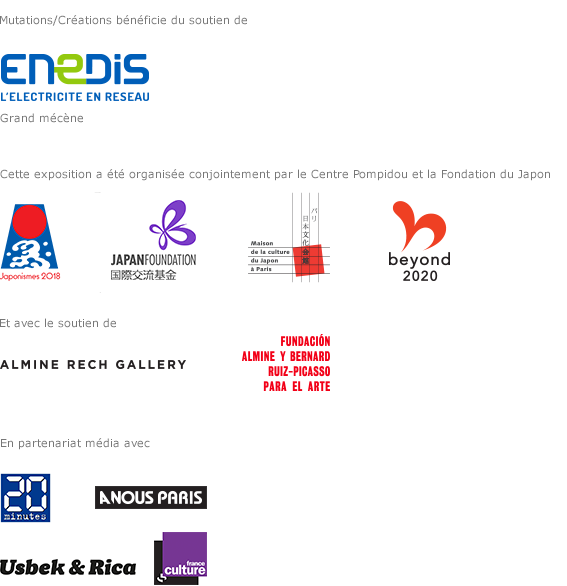Exhibition / Museum
Ryoji Ikeda | continuum
Mutations / Créations 2
15 Jun - 27 Aug 2018

The event is over
Composer and visual artist Ryoji Ikeda is a prominent figure in Japanese electronic music. His creations invite listeners to experience immersion in a world mingling sound, image, space, perceptive phenomena and mathematical equations. The exhibition unveils a new installation, where a black room and a white room divide the space into two opposing and complementary worlds. On one side, a large audiovisual installation where the artist makes a "meta-composition": a vertiginous mix of sound and visual data that are abstract, according to mathematical laws. On the other, a sound installation consisting of huge loudspeakers, where you are invited to a listening performance through a circuit where you can walk around freely, and which guides your musical experience.

When
11am - 9pm, every days except tuesdays
Where
Interview Between the Artist and the Exhibition Curator
Marcella Lista - To what does the idea of “continuum” in the exhibition title refer?
Ryoji Ikeda - The idea of the exhibition is that of an experience spanning the continuous and the discrete. In other words, unity and multiplicity, the organic and the divisible, wave and particle, analogue and digital… Our scientific representations of the world have always alternated between these two opposed modes of interpretation. It has been a matter of on-going debate among philosophers and mathematicians since the beginnings of Western philosophy. The philosopher and mathematician Leibniz (1646-1716), a forerunner of computational thinking in his interest in binary code and the ars combinatoria, was greatly preoccupied by the infinitely divisible composition of what appears to us as continuous: matter, space, motion. This insoluble problem he referred to as “the labyrinth of the continuum”. Today, our whole system of rational thought is more and more reliant on a discontinuous organisation of information: in science, banking, engineering, etc., our doings are dictated by the digital rule of 0s and 1s. But our subjective way of being and thinking, the world of sensation, presence and consciousness, belongs to the continuous. You cannot rationalise them, you just have to let them be in sensory and intellectual awareness. It’s this tension between the rational division produced by knowledge and the no less real sense of the continuum that I’m interested in.
ML - The very organisation of the exhibition seems to be based on oppositions. Yet each of the two works generates a very complex space of experience.
RI - Yes, I really want to make the visitor aware of this idea of the binary code that structures our environment, but I want to give the whole thing a twist, to explore the slippages… The first work, an audio-visual installation, is entitled code-verse. It’s both the universe of code and the idea of code as poetry. It’s a kind of meta-composition in which I take up materials from earlier works, like the datamatics, and raise them to greater abstraction. The data here are less important than the code itself, which I understand in terms of musical notation or the mathematics of numbers. I would say that code-verse is an attempt to interrelate multiple codes in a single piece both symphonic and polyphonic. The result exceeds our capacities for perception and decipherment, inducing a state of consciousness in which you look at something the brain can make nothing of.
The second work, A [continuum], is a sound piece whose spatiality is almost sculptural. It’s based on the different frequencies that have been used to define the note A from the age of Bach to the 1970s. The concert pitch shared by all of western music has varied by several herz through history. I combine these frequencies in the form of sinusoidal waves – a very pure sound, like that of a tuning fork – to create a composition distributed across five big speakers. The encounters between neighbouring but different frequencies produces a very fine textured fabric of resonances and interferences. But these have the property of changing as we move about… The continuum thus finds itself fragmented in a situation in which everyone perceives this musical experience in their own way, a composition in movement, in perpetual change.
Source :
in Code Couleur, n°31, may-august 2018, pp. 38-40.
Partners





